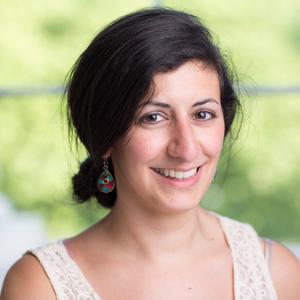Telling an Engineer’s Story with One Picture

Categories: QEPrize Ambassadors
A few days before the start of World Space Week, I cycled over to the British Interplanetary Society in London for Picture Yourself As An Engineer, a photography and storytelling workshop. The event formed part of Engineer the Story, a project run by the Ideas Foundation and funded by the Royal Academy of Engineering’s Ingenious programme. Bringing together professional engineers, photographers and aspiring engineering students, the event looked to create engaging stories and content for the #IamAnEngineer campaign, aimed at young people and families who use social media platforms for careers insights.
Inspiring people come from all walks to life, they are not necessarily older or in more senior positions. Mingling with the other attendees before the event kicked off, I met Bukunmi Oloyede, an impressive A-level student and aspiring engineer. An engineering summer school sparked her interest in civil and construction engineering, and she explained that this also matches up with her interest in the arts, design and materials.
The event kicked off with a story about an encounter with an astronaut. Clive Booth, a photographer, film maker, writer, and ambassador for Canon amongst other things, grew up obsessed with space. When the opportunity to photograph his childhood hero astronaut Al Worden presented itself, he grabbed it with enthusiasm despite having a broken ankle. Hobbling around the Excel Centre in London, Clive found himself face to face with his hero, but under terrible lighting. He thought quickly and moved Al into a nearby space, with better lighting Clive managed to create some incredible images of this extraordinary man, and talked us through his thought process. He told a story and conveyed emotion through a single image – what the Ideas Foundation want to achieve with images of engineers.
Shafia Fiaz, social media content creator for the Ideas Foundation, followed with some practical tips for social media use. Key to this was a good camera, including mobile phone cameras, for taking high quality images or videos. For those using TikTok, Shafia recommended re-posting content that does well, and pinning the top three videos. For all platforms, Shafia’s advice was to keep it simple – do not overdo it with filters, stickers and so on. Hashtags are important to help signpost viewers to the right content, and websites exist to help you choose the most appropriate hashtags.
Last but not least, photographer and Ideas Foundation mentor Michael Cockerham shared some of his own stories and work before leading a live demonstration to show the subtleties of lightning, the importance of quickly building rapport with the person being photographed, and how tiny changes – where a subject is looking, how their head is titled – can make a huge difference to the story a photograph tells.
On the surface, this workshop was lightyears away from my job in the energy sector. But as engineers, understanding the subtleties of these communication techniques, and learning to tell our stories using diverse channels, will raise the profile of the profession and attract talented young people like Bukunmi to contribute to solving the world’s challenges with engineering.

More on the author, Yasmin Ali, QEPrize Ambassador
A chemical engineer in the energy sector. Yasmin is Hydrogen Project Development Manager at RWE, a multinational energy company.




